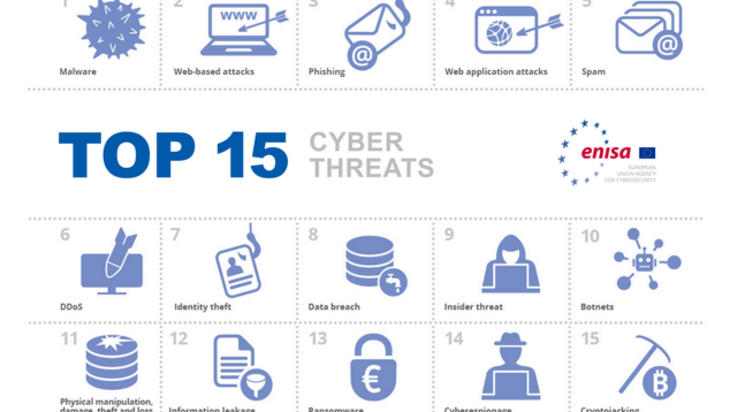For the eighth time, the European Union Agency for Cybersecurity (ENISA) provides an overview of the current threat situation from cyber attacks and malware in its report “Threat Landscape 2020”. The outlook: Terrifying
The list of horrors: These 15 cyber threats are most common
- Malware
- Web-based Attacks
- Phishing
- Web Application Attacks
- SPAM
- Distributed Denial of Service (DDoS)
- Identity Theft
- Data Breach
- Insider Threat
- Botnets
- Physical Manipulation, Damage, Theft and Loss
- Information Leakage
- Ransomware
- Cyber Espionage
- Cryptojacking
Here are the key points from ENISA’s Threat Landscape report:
- While malware is still listed as the No. 1 threat, threats from phishing, identity theft or extortionist malware are catching up strongly.
- The attackers’ main motive remains personal enrichment.
- Many cyber security incidents still go unnoticed or are only discovered after a long time – on average only after six (!) months.
- More and more attackers are using social media to further increase the efficiency of their attacks.
- Attacks by state-directed actors to obtain high-value data and even state secrets continue to increase.
- Because digital technologies will continue to diversify, the number of potential vulnerabilities in virtual and physical environments is increasing.
- The pandemic has further fueled attacks on home offices, businesses, administrations and critical infrastructure.
- During the pandemic, it has become apparent that cybercriminals are evolving their skills, adapting quickly and targeting relevant victim groups more specifically.
- From copycats of popular brand websites to fraudulent services that never deliver the goods: The number of fake online shopping sites and fraudulent online retailers has reportedly increased during the COVID 19 pandemic
- The number of incidents of cyberbullying and sextortion also increased with the COVID-19 pandemic. The use of smartphones and social media platforms makes younger generations particularly vulnerable to these types of threats
- The number of phishing victims in the EU continues to rise, with malicious actors using the COVID-19 theme to lure them in. COVID-19-themed attacks include messages with malicious file attachments and messages with malicious links that redirect users to phishing websites or malware downloads
ENISA’s Threat Landscape report clearly shows that there is still a long way to go to achieve a more secure digital environment. This is mainly due to the weakening of existing cyber security measures through changes in working and infrastructure patterns as a result of the COVID 19 pandemic. This has led to an increase in personalised cyber attacks by cyber criminals using more advanced methods and techniques.
And this will be with us at least as long as the pandemic itself. End open.
Detailed reports on each of the 15 threats are still available from ENISA:
Video:
